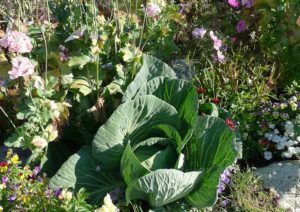 This gardening season is going to be an especially healthy one if gardeners follow advice from the National Garden Bureau (NGB). The organization has decided 2017 should be the year of the underappreciated vegetables in the Brassica family.
This gardening season is going to be an especially healthy one if gardeners follow advice from the National Garden Bureau (NGB). The organization has decided 2017 should be the year of the underappreciated vegetables in the Brassica family.
Brassica plants, like cabbage and broccoli, are some of the most delicious and nutritious vegetables we can grow in our gardens. Some of the other healthful vegetables in the Brassica group include Pak or Bok Choi, cauliflower, Brussels sprouts, collards, kale, kohlrabi, radish, rutabaga and turnips.
These vegetables provide loads of vitamin C and soluble fiber, plus they’re known for their healthy doses of glucosinolates. Research shows this important compound helps reduce the risk of some cancers of the digestive tract. Red Brassicas, like purple cabbage, are even more nutritious because they contain a powerful antioxidant.
Besides being known for their health benefits, Brassica vegetables are some of the earliest to harvest because they thrive in chilly weather. Gardeners can begin planting these cool-season crops 4-6 weeks before the average date of the last killing frost (around the middle of May in our area) or when nighttime temperatures are still in the 40s.
All of the cool-season vegetables are easy to grow whether you have a large vegetable garden, a few raised beds or even a container garden on the patio or balcony.
You can also plant and grow these beneficial vegetables from seeds or transplants. One of the easiest ways to get started with your cool-season vegetable garden is to purchase transplants at Nick’s Garden Center. Then as soon as the time is right and the soil is dry enough to be workable, plant them in a spot that gets 6 or more hours of sun a day.
If you’d like to grow your own vegetable transplants, like cabbage and broccoli, follow seed package instructions and start seeds indoors the required number of days or weeks ahead of planting time. Slowly expose transplants to their outdoor conditions before planting.
Some Brassica vegetable seeds can be planted directly in the garden, like kale and radishes. Just dig a furrow in the soil and plant seeds ½ to 1-inch deep and several inches apart, depending on the seed packet instructions.
Cover lightly with soil, water in gently and keep consistently moist. Follow the instructions for thinning seedlings after they’ve grown about 2-3 inches tall.
Brassicas can withstand light to moderate frosts and even a layer of snow; however, be prepared to protect plants at night if a hard freeze is predicted. Use row cover cloth, old sheets, plastic milk jugs, buckets or other plant coverings. Remove plant protection each morning.
Harvest your healthy vegetables while they’re still small and tender. Then enjoy them grated into salads, tossed into soups, sautéed with other vegetables, simply steamed, or quickly stir fried to get the tastiest and most nutritious results.


